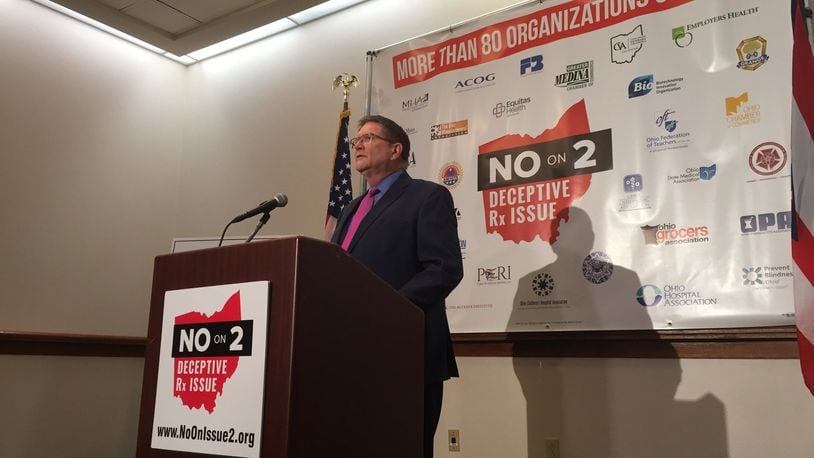State Issue 2 — would have capped what state programs spend on prescription drugs — faced a barrage of ads funded by the drug companies that claimed the issue would have raised drug prices for a majority of Ohioans.
Proponents, who were outspent by more than 3-to-1, argued that the measure would save money the state could funnel into other needs or return to the taxpayers.
But few in the state bought that argument or were swayed by it. Just 21 percent of the voters — a group considerably smaller than the percentage who voted to legalize recreational marijuana in Ohio two years ago — said yes to Issue 2 on Tuesday.
RELATED: State Issue 2 fails big; confusion blamed
Opponents say they successfully communicated the potential pitfalls of the law through the work of more than 80 organizations representing doctors, nurses, pharmacists, hospitals and veterans.
“These trusted leaders who best understood the potential harms of Issue 2 were active and visible in our campaign, and they helped persuade their fellow Ohioans to cast a no vote,” said Curt Steiner, campaign manager for Ohioans Against the Deceptive Rx Ballot Issue.
But the no side also benefited from the record-breaking amount of money offered up by major drug manufacturers like Pfizer, Merck and Eli Lilly.
As of mid-October, before the final pre-election push, the opposition campaign had raised and expected to spent more than $57 million. Final campaign finance reports for the election aren't due until Dec. 15 but total spending between the two campaigns could come close to $90 million, the amount referenced by Willard.
“It’s very difficult to get your message through when your opponents are spending more money than has ever been spent in an Ohio campaign,” Willard said.
The previous record for spending on a ballot issue campaign in Ohio was $73 million in 2009, when Ohioans approved establishing casinos in four Ohio cities.
Observers say the deluge of ads this year served to confuse voters, and confused voters tend to vote no.
“It’s really too complex of an issue to hit the ballot,” said Marc Sweeney, dean of the school of pharmacy at Cedarville University. He was opposed to Issue 2 because he doesn’t believe it was workable, but like many on both sides, he wants to see Ohio stakeholders work together on a solution to high drug prices.
“The bill itself was not good for Ohio, but the premise of the bill is,” he said. “Now it sets the stage for further discussions with our legislators.”
The AIDS Healthcare Foundation, the California non-profit that funded the Yes campaign, says it is looking for opportunities to pass similar legislation in other jurisdictions, including South Dakota and Washington, D.C.
RELATED: Who is Michael Weinstein, the man behind Issue 2?
“We think that eventually we’ll raise enough public awareness that we’ll be a change agent in some way,” Willard said.
Willard questioned why opposition groups who were “quick to cozy up to the drug companies” are now claiming they want solutions. But the health care organizations who were opposed to Issue 2 say they’ve long worked to lower drug prices.
“Issue 2 is the best thing that never happened,” said Antonio Ciaccia, director of government and public affairs for the Ohio Pharmacists Association.
The OPA felt Issue 2 would have caused collateral damage to pharmacies and consumers. But Ciaccia said there are possible solutions.
"First and foremost, there has to be some acknowledgement that there is a quasi-kickback scheme happening," he said, referring to the secretive world of rebates between drug companies, pharmacy benefit managers and health plans. Ciaccia would like to see discounts and rebates done away with completely, or at least a more transparent system put in place.
INVESTIGATION: What drives prescription drug prices?
“We think this system is totally ripe for reform.”
MORE COVERAGE OF PRESCRIPTION DRUG PRICES
Consumers kept in the dark over drug pricing
About the Author
